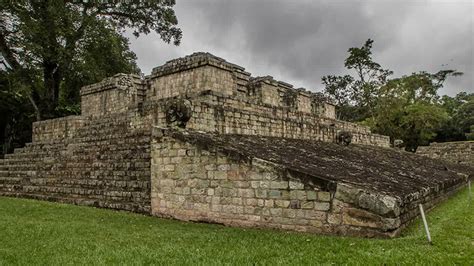Explore the origins, formation, political structure, role in Italian unification, and end of the Piedmont-Sardinia monarchy in this insightful blog post.
Origins of Piedmont-Sardinia
Contents
Piedmont-Sardinia was a historical region in northwest Italy, consisting of the territories of the Kingdom of Sardinia and the duchies of Piedmont. The origins of Piedmont-Sardinia can be traced back to the early Middle Ages, when it was part of the Kingdom of the Lombards and later the Kingdom of Italy. With the rise of the House of Savoy in the 11th century, the region began to take on its distinct identity as a powerful and influential entity in northern Italy.
During the 18th and 19th centuries, Piedmont-Sardinia played a crucial role in the Italian unification movement. As a constitutional monarchy, the region sought to unify the disparate Italian states under its leadership, ultimately leading to the formation of the Kingdom of Italy. The political and social structure of Piedmont-Sardinia was characterized by its emphasis on centralized power and modernization, which set it apart from the other Italian states of the time.
The end of the Piedmont-Sardinia monarchy came with the unification of Italy in 1861, when it was absorbed into the new Kingdom of Italy. However, the legacy of Piedmont-Sardinia lived on in the form of its institutions, traditions, and cultural influence, making it an integral part of Italy’s rich and complex history.
Formation of the Kingdom
The formation of the Kingdom of Piedmont-Sardinia took place in the 18th century, during the reign of the House of Savoy. It was the result of a series of territorial expansions, strategic alliances, and diplomatic negotiations that helped consolidate the domains of the ruling house into a unified kingdom. The process of formation involved the acquisition of territories such as Savoy, Nice, and Sardinia through military conquest and dynastic marriages, as well as the establishment of administrative and legal frameworks to govern the newly consolidated territories.
Under the leadership of prominent rulers such as Victor Amadeus II and Charles Albert, the Kingdom of Piedmont-Sardinia emerged as a significant political and military power in the region, with a strong emphasis on centralization and modernization. The kingdom’s capital, Turin, became a center of cultural and intellectual activity, attracting prominent figures such as philosophers, artists, and scientists who contributed to the kingdom’s development.
The formation of the Kingdom was also influenced by the geopolitical dynamics of Europe, particularly the rivalries and alliances among major powers such as Austria, France, and Spain. The Kingdom of Piedmont-Sardinia’s strategic position in the western Alps and its control over key trade routes and resources made it an important player in the balance of power in Europe.
Moreover, the kingdom’s efforts to modernize its military, economy, and administration laid the groundwork for its future role in the Italian Unification process. The reforms undertaken during the formation of the Kingdom helped strengthen its institutions and enhance its capacity to lead the movement for Italian unity and independence.
Political and Social Structure
Piedmont-Sardinia had a unique political and social structure that played a significant role in the unification of Italy. The region was ruled by a monarchy, with the king holding absolute power. The king was assisted by a council of ministers, who were responsible for advising the king on matters of governance. This political structure allowed for a centralized system of government, which helped to consolidate power in the hands of the ruling elite.
On a social level, Piedmont-Sardinia was characterized by a rigidly hierarchical society. The nobility held significant power and privilege, while the common people had little influence over political and social affairs. This social structure created deep divisions within the region and contributed to widespread discontent among the lower classes.
Despite the hierarchical nature of society, there were also elements of progress and modernization within Piedmont-Sardinia. The ruling elite implemented a series of reforms aimed at modernizing the economy and society, including advancements in agriculture, industry, and education. These reforms helped to lay the groundwork for the region’s eventual role in the unification of Italy.
Overall, the political and social structure of Piedmont-Sardinia played a crucial role in shaping the region’s identity and its contribution to Italian unification. The centralized political system and hierarchical social structure set the stage for the region’s leadership in the movement for a unified Italian state.
Role in Italian Unification
Role in Italian Unification
Role in Italian Unification
Piedmont-Sardinia played a crucial role in Italian Unification in the 19th century. As the most powerful and progressive state in the Italian peninsula, it was in a unique position to lead the movement for unification. Under the leadership of Prime Minister Count Camillo di Cavour, Piedmont-Sardinia pursued a policy of modernization, industrialization, and liberal reforms to strengthen the state and prepare for the unification of Italy. Cavour recognized that the support of other European powers, particularly France, was essential for achieving Italian unification, and he skillfully maneuvered Piedmont-Sardinia into a position of influence on the international stage.
One of the most significant contributions of Piedmont-Sardinia to Italian unification was its military campaigns against the Austrian Empire, which controlled much of northern Italy. In alliance with the French, Piedmont-Sardinia waged a successful war against Austria in 1859, known as the Second Italian War of Independence. This war resulted in the annexation of several regions of northern Italy to Piedmont-Sardinia, laying the groundwork for the eventual unification of Italy.
In 1860, Garibaldi’s famous expedition to southern Italy, known as the Expedition of the Thousand, further advanced the cause of Italian unification. With the support of Piedmont-Sardinia, Garibaldi’s forces captured Sicily and Naples, leading to the unification of the Kingdom of Italy under the rule of King Victor Emmanuel II of Piedmont-Sardinia.
The role of Piedmont-Sardinia in Italian unification was not only military but also diplomatic and political. Cavour’s skillful diplomacy and alliances with other European powers were instrumental in securing their support for Italian unification. Additionally, Piedmont-Sardinia’s liberal institutions and constitutional monarchy served as a model for the future unified Italy, providing a framework for the development of a unified Italian state.
In conclusion, Piedmont-Sardinia played a central and indispensable role in Italian unification, providing leadership, military prowess, diplomatic skill, and a model for the future Italian state. Without the efforts and contributions of Piedmont-Sardinia, the unification of Italy may not have been achieved in the same manner or timeframe, making it a pivotal actor in the history of modern Italy.
End of Piedmont-Sardinia Monarchy
The End of Piedmont-Sardinia Monarchy marks a significant turning point in the history of Italy. After the Italian Unification in 1861, the monarchy of Piedmont-Sardinia came to an end, as Victor Emmanuel II was proclaimed the King of Italy. This event symbolized the unification of Italy under one ruler, bringing an end to the separate monarchy of Piedmont-Sardinia.
Following the unification of Italy, the former ruling family of Piedmont-Sardinia played a significant role in the newly formed Italian government, with Victor Emmanuel II becoming the first king of the unified Italy. This marked the end of the independent monarchy of Piedmont-Sardinia, as it was absorbed into the larger kingdom of Italy.
Despite the end of the monarchy, the influence and legacy of Piedmont-Sardinia continued to shape the political and social structure of Italy in the years to come. The end of the monarchy marked a new era for the entire Italian peninsula, as the various regions and states were unified under one ruler, bringing an end to centuries of division and conflict.
The End of Piedmont-Sardinia Monarchy had a lasting impact on the history and development of Italy, as it paved the way for a unified nation and the establishment of a new political and social order. The legacy of Piedmont-Sardinia lives on in the history of Italy, serving as a reminder of the struggles and sacrifices made to achieve national unity and sovereignty.













